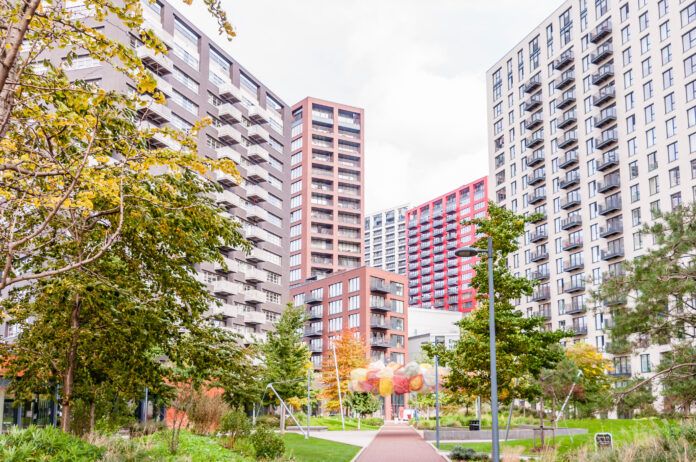Lee Bucknall, country manager UK & Ireland at James Hardie, advises on navigating the Building Safety Act and clearly explains the new approvals process introduced to ensure building safety is considered throughout the design and construction phases.
Published in the wake of the Hackitt Enquiry, The Building Safety Act (BSA) impacts everyone working within the construction industry and addresses the way that buildings are designed, constructed and maintained in the UK, with the highest measures being applied to high risk buildings.
Essentially the legislation means that everyone involved in the construction of buildings will be required to demonstrate that they’re competent to carry out their roles, responsibilities and functions. At James Hardie we’ve been working with architects and contractors to help them understand and navigate the new ‘Gateways’ and the roles and responsibilities that must be adhered to in order to avoid fines, sentences and reputational damage.
For more interesting articles be sure to check out the RCI April 2024 issue!
The Gateways (or safety checkpoints), are a new approvals process introduced to ensure building safety is considered throughout the design and construction phases. We work with our clients to ensure all required evidence is collated to establish competence throughout the project (including their supply chain).
Gateway One – Planning Stage
Any developer seeking planning permission for a high-rise building must submit a comprehensive fire and structural safety report detailing how the proposed design should meet the strict safety standards of the BSA.
Gateway Two – Pre-construction
Replacing the building control ‘deposit of plans’ stage, this occurs prior to construction work. No building work can begin until the Building Safety Regulator (BSR) confirms that the plans meet the demands of the building regulations.
Gateway Three – Pre-Occupation
This occurs at the final completion stage of a higher-risk building. The BSR will assess whether work has been completed in line with the building regulations. If it passes, then the building will be registered, and can be occupied.
The golden thread’ is the information that allows you to understand a building and the steps needed to keep both the building and people safe, now and in the future.
It will be the duty of the people responsible for a building to put in place and maintain a golden thread of information. This includes building companies, principal designers, principal contractors and local authorities who will all need to have easily accessible, reliable, up to date and accurate information. At James Hardie we hold all product information, certificates and testing on a secure server for our clients giving them peace of mind that the required information can be accessed on request.
A series of new ‘duty holder’ roles have been introduced with the building regulations. Individuals must be able to evidence they have the appropriate skills, knowledge, experience and behaviours to perform their roles, and organisations must be able to demonstrate their organisational capabilities. We are actively engaged with these duty holders throughout the timeline of a project.
The definitions of the roles are:
- Principal Designer – In control of all design work.
- Principal Contractor – In control of the whole project during the construction phase.
- Duty Holders – Includes Architects, Contractors and Installers.
The BSA will undoubtedly change the way in which buildings are designed, constructed and maintained, and how records are kept of what was built by whom and how. Working with an established partner like James Hardie will prevent the risk of breaking the law, potentially resulting in imprisonment, financial penalties and serious damage to your brand’s reputation.
Be sure to see James Hardie at the RCI Show 2024 on Stand 22.




